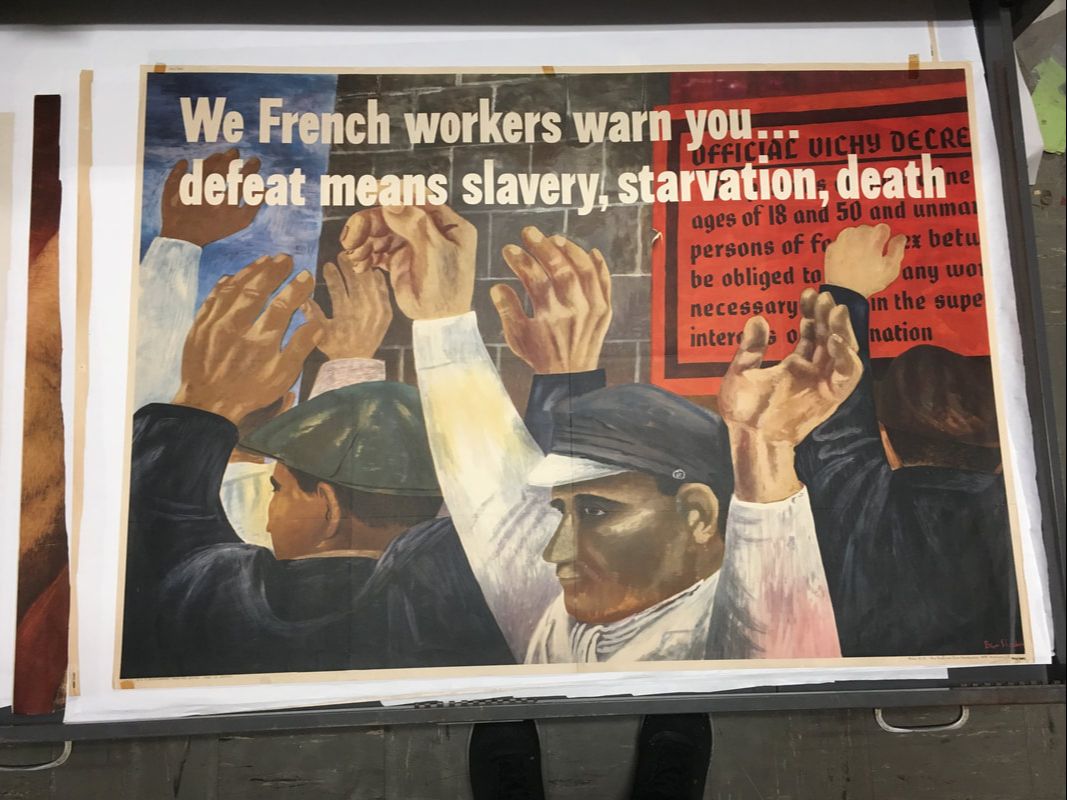| It turns out, thousands of these posters were made, promoting the sales of war bonds, conserving resources, growing “victory gardens”, improving nutrition, and the promotion of working in war-related industries. They were overseen by the Office of War Information (OWI) Domestic Operations Branch, whose goal was to distribute the posters in every American town and swap them out every two weeks with new posters supporting the war through efforts like rationing, purchasing War Bonds and carpooling at home. The OWI teamed up with Boy Scouts, taxicab agencies, railroads, and the National Retail Association to distribute and update the posters country-wide through the duration of the war. The artists who drew these posters were unpaid and numbered 8,000, and they produced 30,500 images that were turned into posters and comics, becoming one of the faces of the United States during WWII. Artists were instructed to create posters that fit into one of the following themes: |
| 1. The Nature of the Enemy - general or detailed descriptions of this enemy, such as, he hates religion, persecutes labor, kills Jews and other minorities, smashes home life, debases women, etc. 2. The Nature of our Allies - the United Nations theme, our close ties with Britain, Russia, and China, Mexicans and Americans fighting side by side on Bataan and on the battlefronts. 3. The Need to Work - the countless ways in which Americans must work if we are to win the war, in factories, on ships, in mines, in fields, etc. 4. The Need to Fight - the need for fearless waging of war on land, sea, and skies, with bullets, bombs, bare hands, if we are to win. 5. The Need to Sacrifice - Americans are willing to give up all luxuries, devote all spare time to the war effort, etc., to help win the war. 6. The Americans - we are fighting for the four freedoms, the principles of the Atlantic Charter, Democracy, and no discrimination against races and religions, etc. |
| The phrase “loose lips sink ships” comes from these posters, which were meant to warn of the dangers of military personnel discussing war plans in the open. There was a major fear of spies in the US during WWII, or individuals who may sell secrets they overheard to the Axis powers, which had the very real possibility of causing an attack and fatalities on the side of the Allies. These particular posters were typically hung places where military personnel frequented, but did appear in civilian areas as well. |










 RSS Feed
RSS Feed